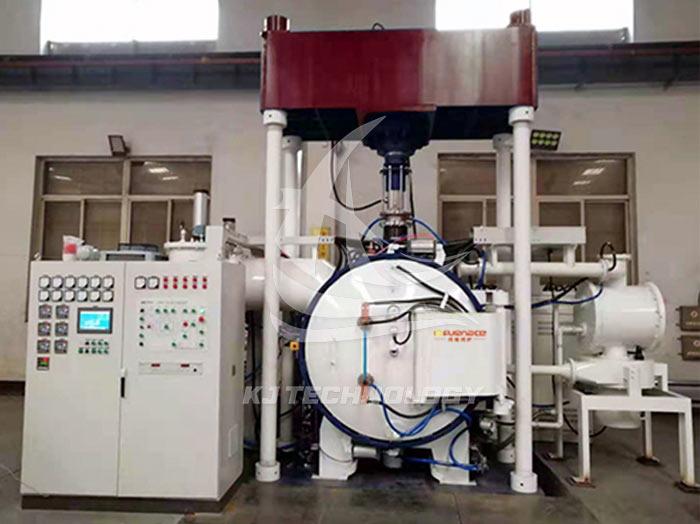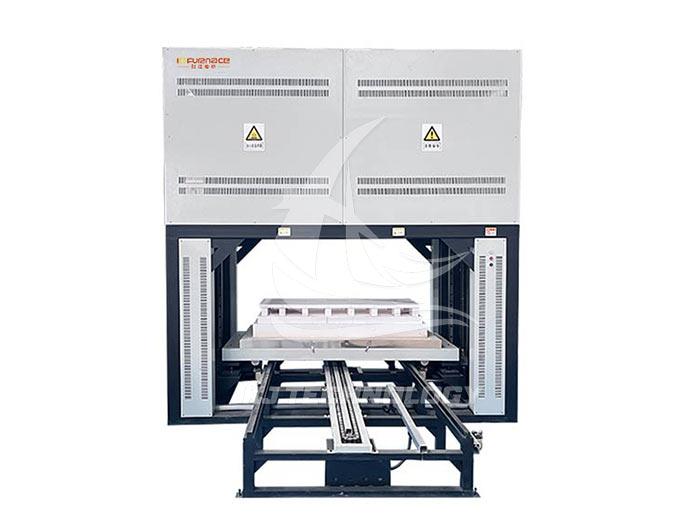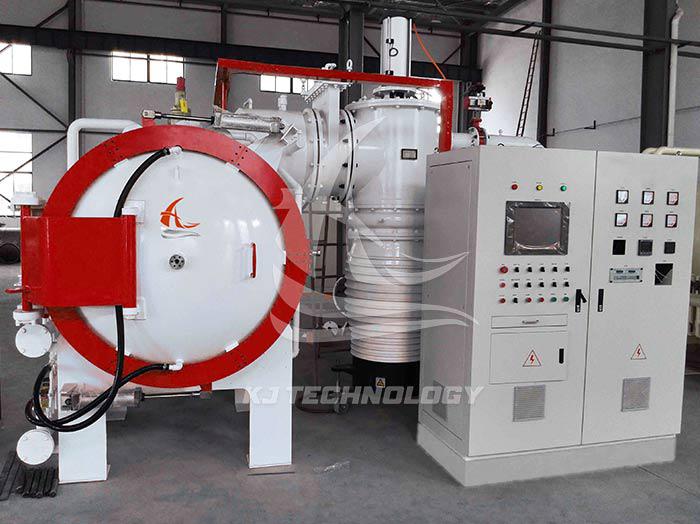Can laboratory graphite vacuum furnace sinter metals?
 08-06-2025 Author: KJ technology
08-06-2025 Author: KJ technology
The laboratory graphite vacuum furnace is fully capable of sintering metals, providing ideal conditions for metal sintering through vacuum environment, graphite heating elements, structural adaptability, and process flexibility. The following analysis is conducted from four aspects: principle, equipment characteristics, material applicability, and experimental cases:
1. Vacuum environment: the core guarantee for metal sintering
The vacuum environment is a key condition for metal sintering, and its role is reflected in the following three aspects:
Preventing oxidation: Metals are prone to react with oxygen at high temperatures to form oxide films, which hinder the bonding between particles. The vacuum environment effectively inhibits oxidation reactions by reducing oxygen partial pressure, ensuring the cleanliness of metal surfaces and promoting densification. For example, during the sintering of titanium alloys, the vacuum degree needs to be below 10-3Pa to avoid the formation of brittle phases by the reaction of titanium with oxygen and nitrogen.
Reduce gas pores: The adsorbed gases (such as hydrogen and nitrogen) in metal powders expand at high temperatures, forming pores. A vacuum environment reduces gas partial pressure, promotes gas escape, reduces porosity, and increases material density. For example, during the sintering of hard alloys, the vacuum environment can reduce the porosity to below 0.1%.
Reduce evaporation temperature: A vacuum environment can lower the saturation vapor pressure of metals, allowing high melting point metals (such as tungsten and molybdenum) to melt at lower temperatures, reducing energy consumption and preventing grain coarsening. For example, the melting point of tungsten is 3410 ℃ in air, but it can be lowered to around 3000 ℃ under vacuum.
2. Graphite heating element: dual guarantee of high temperature and stability
Graphite, as a heating element, provides a stable high-temperature environment for metal sintering, and its advantages are reflected in:
High temperature performance: The melting point of graphite is as high as 3727 ℃, and it can work stably in an inert or vacuum environment for a long time above 2200 ℃, meeting the sintering needs of most metals (such as copper based alloys at about 900 ℃ and nickel based alloys at about 1200 ℃).
Uniform thermal conductivity: Graphite has a thermal conductivity of up to 150 W/(m · K), which can quickly transfer heat to various parts of the furnace, ensuring temperature uniformity. For example, when sintering carbides, the temperature uniformity can reach ± 10 ℃ at a working temperature of 1400 ℃, meeting the requirements of high-precision sintering.
Chemical stability: Graphite does not react with most metals at high temperatures, avoiding material contamination. For example, when sintering silver based brazing materials, graphite crucibles do not introduce impurities, ensuring the purity of the brazing materials.
3. Structural adaptability: meeting the diverse needs of metal sintering
The structural design of the laboratory graphite vacuum furnace is flexible and can be adapted to different metal sintering processes:
Horizontal structure: suitable for sintering long or large-sized metal parts, such as hard alloy cutting tools and molds. For example, the working area size of a certain model of graphite vacuum furnace is Φ 120 × 300 mm, which can accommodate multiple standard sized hard alloy compacts.
Crucible rotation mechanism: By rotating the crucible, it promotes the flow of molten metal, reduces component segregation, and improves tissue uniformity. For example, when sintering high-speed steel, the crucible rotation speed can be adjusted to 0-20 r/min, effectively improving the distribution of carbides.
Multi stage temperature control: supports multi-stage program control such as heating, insulation, and cooling, adapting to the sintering curves of different metals. For example, when sintering titanium alloys, the process of "rapid heating - long-term insulation - slow cooling" can be used to avoid cracking.
4. Material applicability: covering a wide range of metal types
The laboratory graphite vacuum furnace can sinter various metals and alloys, including but not limited to:
Refractory metals such as tungsten, molybdenum, tantalum, etc. have high melting points (tungsten melting point 3410 ℃) that require a vacuum environment to reduce the evaporation temperature, while graphite heating elements provide stable high temperatures.
Active metals, such as titanium, aluminum, magnesium, etc., are prone to react with oxygen and nitrogen. Vacuum environment can prevent oxidation and maintain material activity. For example, vacuum sintering of titanium alloys can avoid the formation of brittle TiO ₂ and TiN phases.
High purity metals such as silver, copper, gold, etc., vacuum environment can reduce the introduction of impurities and improve material purity. For example, the vacuum sintering of high-purity silver based brazing materials can achieve a purity of over 99.99%.
Metal based composite materials: such as titanium carbide reinforced iron-based composite materials, vacuum environment can promote interface bonding and improve material properties.








